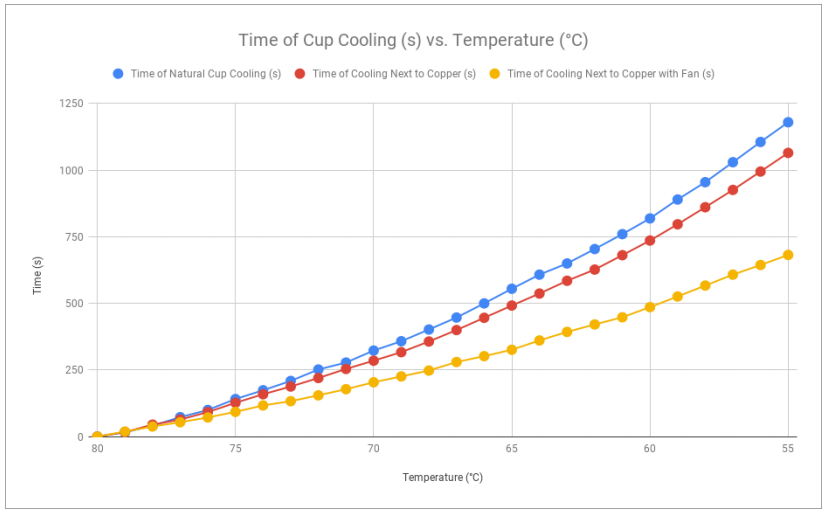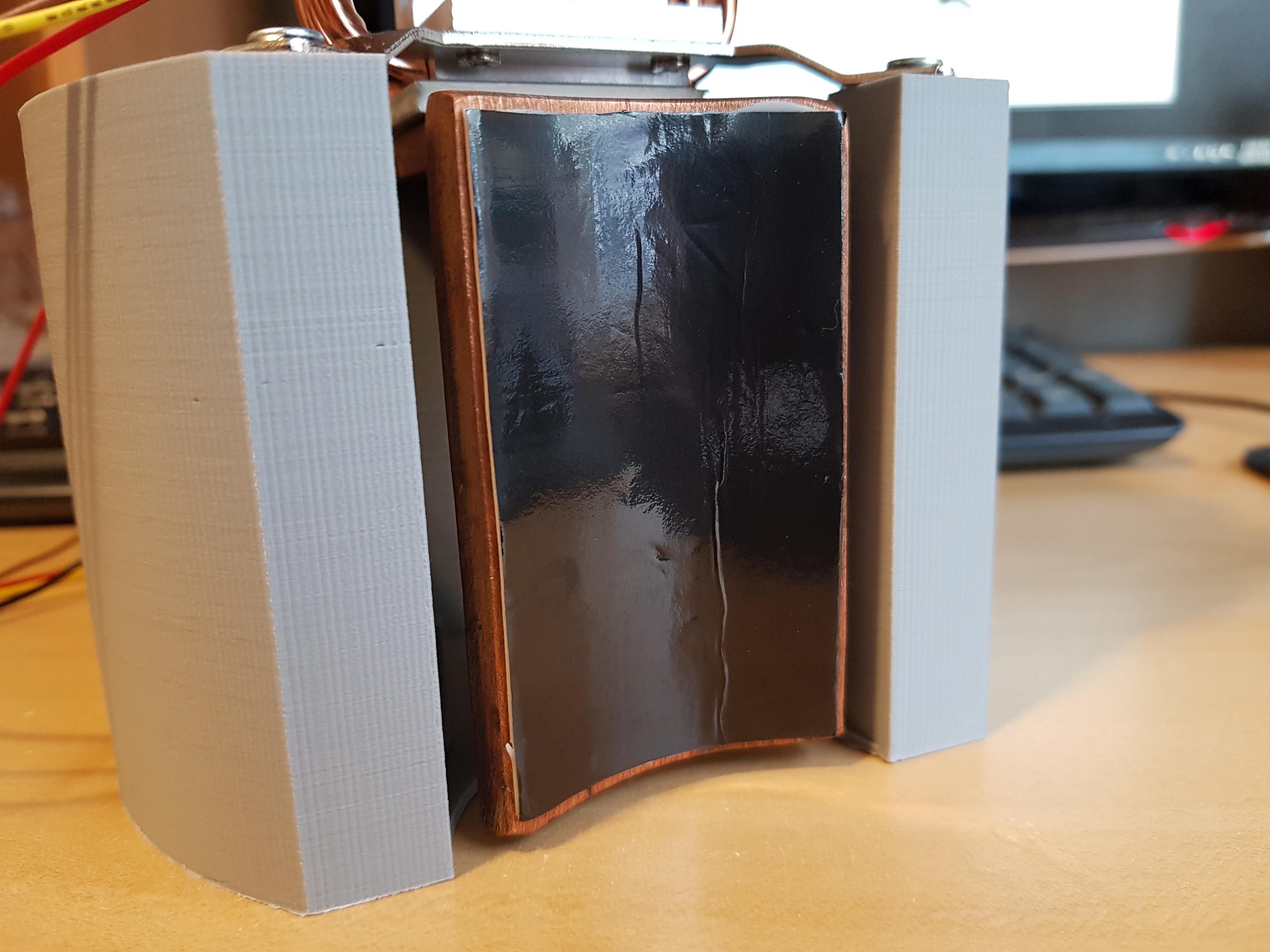One of the interesting questions that arises from this idea is how much faster we can cool down a cup of coffee or tea. I took some data by measuring the time at which each degree of temperature was reached. Apologies for the terrible charts, the temperature probe I have only measures to the nearest degree Celsius. To get the most accurate measurements I recorded the time measured as soon as the degree changed.

Time to reach 60°C:
Natural Cooling - 13 minutes 39 seconds
Cooling Next to Copper - 12 minutes 16 seconds
Cooling Next to Copper with Fan (3.7V) - 8 minutes 6 seconds
Natural Cooling
This was the control of the small experiment. Almost 14 minutes is a long time to have to wait for the perfect temperature to come along.
Cooling Next to Copper
In addition to harvesting some energy, the copper does a noticeable job of cooling the drink by transferring some of the heat away from the cup. The peak voltage generated was 304mV. I recently added a thermal pad to the conducting surface to better conform to the cup. It improved the peak voltage generated by about 30-40mV.

Cooling Next to Copper with Fan
Using the fan constantly at 3.7V (the voltage of a LI-ion battery) had significant results by reducing the cooling time to 60°C by over 5 minutes and 30 seconds. The TEG was able to generate 349mV at the peak as the fan also pulled heat away from the heat sink, therefore increasing the temperature differential.
The constant current draw of the fan was measured as 56.6mA. Over the 8 minutes and 6 seconds of cooling, less that 8mAh of energy was used by the fan. Once the charging circuit is finalized, I will determine how much energy is produced over the full generation stage of the TEG.
The ultimate hope would be that this device could produce enough energy over time to make up the energy used by the fan. At the very least getting some energy back to extend the life of the battery will be considered a partial success.
 Scott Clandinin
Scott Clandinin
Discussions
Become a Hackaday.io Member
Create an account to leave a comment. Already have an account? Log In.